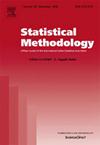Sequential tests controlling generalized familywise error rates
Q Mathematics
引用次数: 11
Abstract
Sequential methods are developed for conducting a large number of simultaneous tests while controlling the Type I and Type II generalized familywise error rates. Namely, for the chosen values of , , , and , we derive simultaneous tests of individual hypotheses, based on sequentially collected data, that keep the probability of at least Type I errors not exceeding level and the probability of at least Type II errors not greater than . This generalization of the classical notions of familywise error rates allows substantial reduction of the expected sample size of the multiple testing procedure.
控制广义家族错误率的顺序测试
在控制I型和II型广义家族误差率的同时,开发了进行大量同时测试的顺序方法。也就是说,对于α, β, k和m的选定值,我们基于顺序收集的数据推导了d个单独假设的同时检验,这些假设使至少k个类型I错误的概率不超过水平α,并且至少m个类型II错误的概率不大于β。这种对家庭误差率的经典概念的推广允许大幅度减少多重测试过程的预期样本量。
本文章由计算机程序翻译,如有差异,请以英文原文为准。
求助全文
约1分钟内获得全文
求助全文
来源期刊

Statistical Methodology
STATISTICS & PROBABILITY-
CiteScore
0.59
自引率
0.00%
发文量
0
期刊介绍:
Statistical Methodology aims to publish articles of high quality reflecting the varied facets of contemporary statistical theory as well as of significant applications. In addition to helping to stimulate research, the journal intends to bring about interactions among statisticians and scientists in other disciplines broadly interested in statistical methodology. The journal focuses on traditional areas such as statistical inference, multivariate analysis, design of experiments, sampling theory, regression analysis, re-sampling methods, time series, nonparametric statistics, etc., and also gives special emphasis to established as well as emerging applied areas.
 求助内容:
求助内容: 应助结果提醒方式:
应助结果提醒方式:


